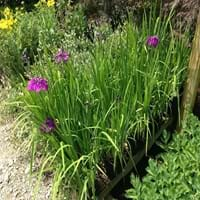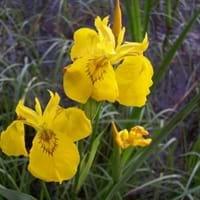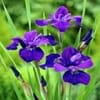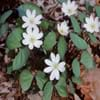Life Span
Perennial
Perennial
Type
Perennial
Herbaceous Perennial
Origin
Russia, Siberia, China, Japan
Europe, Eastern Europe, Northern Europe, Southern Europe, Western Europe, Russia, Siberia, Mediterranean, Iraq, Iran, Western Asia
Types
Not Available
Not Available
Habitat
Boggy areas, gardens, meadows, Shores of rivers or lakes
Temperate Regions, Wet lands
USDA Hardiness Zone
3-9
4-8
Sunset Zone
1a, 1b, 2a, 2b, 3a, 3b, 4, 5, 6, 7, 8, 9, 10, 14, 15, 16, 17, 18, 19, 20, 21, 22, 23, 24
A2, A3, 1a, 1b, 2a, 2b, 3a, 3b, 4, 5, 6, 7, 8, 9, 10, 11, 12, 13, 14, 15, 16, 17, 18, 19, 20, 21, 22, 23, 24
Habit
Clump-Forming
Clump-Forming
Flower Color
Lavender, Blue Violet
Light Yellow, Chocolate
Flower Color Modifier
Bicolor
Bicolor
Leaf Color in Spring
Green, Light Green
Green, Gray Green
Leaf Color in Summer
Green
Gray Green, Dark Green
Leaf Color in Fall
Green, Brown
Gray Green, Dark Green, Yellow green
Leaf Color in Winter
Light Green
Light Green
Leaf Shape
Linear
Sword-like
Plant Season
Spring, Summer
Spring, Summer
Sunlight
Full Sun, Partial Sun, Partial shade
Full Sun, Partial Sun
Type of Soil
Clay, Loam, Sand
Clay, Loam, Sand
The pH of Soil
Acidic, Neutral
Acidic, Neutral
Soil Drainage
Well drained
Poorly Drained
Bloom Time
Early Summer
Not Available
Tolerances
Drought
Drought
Where to Plant?
Container, Ground, Pot
Ground
How to Plant?
Seedlings
From Rhizomes, Seedlings, Water-dispersed Seed
Plant Maintenance
Medium
Medium
Watering Requirements
Do Not over Water, Water Deeply, Water slowly, and allow to dry completely between soakings, Water twice a day in the initial period
Average Water Needs
In Summer
Lots of watering
Lots of watering
In Spring
Moderate
Moderate
In Winter
Average Water
Average Water
Soil pH
Acidic, Neutral
Acidic, Neutral
Soil Type
Clay, Loam, Sand
Clay, Loam, Sand
Soil Drainage Capacity
Well drained
Poorly Drained
Sun Exposure
Full Sun, Partial Sun, Partial shade
Full Sun, Partial Sun
Pruning
Cut or pinch the stems, Pinching, Remove damaged leaves, Remove dead branches, Remove dead leaves
Remove damaged leaves, Remove dead branches, Remove dead leaves
Fertilizers
All-Purpose Liquid Fertilizer, Apply N-P-K, Nitrogen
All-Purpose Liquid Fertilizer
Pests and Diseases
Aphids, Red blotch, Rhizome rot, Slugs, Snails, Viruses
Bacteria, fungus, Viruses
Plant Tolerance
Drought, Full Sun, Variety of soil types
Drought
Flower Petal Number
Single
Single
Foliage Texture
Medium
Medium
Foliage Sheen
Matte
Matte
Attracts
Bees, Butterflies, Flies, Snails
Butterflies, Hummingbirds
Allergy
Skin irritation
allergic reaction, Skin irritation
Aesthetic Uses
Beautification, Bog Garden, Bouquets, Cottage Garden, Showy Purposes
Beautification, Showy Purposes
Beauty Benefits
Not Available
Not Available
Environmental Uses
Air purification
Air purification
Medicinal Uses
Alterative, Anthelmintic, Antidote, Appetizer, Depurative, Diuretic, Hepatitis
cathartic, Diarrhea
Part of Plant Used
Leaves, Root
Flowers, Rhizomes, Whole plant
Other Uses
Basketary, Fibre
Used in herbal medicines
Used As Indoor Plant
Yes
No
Used As Outdoor Plant
Yes
Yes
Garden Design
Bog Garden, Cutflower, Feature Plant, Mixed Border, Water Gardens
Bog Garden, Container, Water Gardens
Botanical Name
IRIS ensata
IRIS pseudacorus
Common Name
Iris
Japanese iris
Pale Yellow Iris, Yellow Flag, Yellow Iris
In Hindi
Japanese iris
Pale Yellow Iris
In German
Japanese iris
Sumpf-Schwertlilie
In French
iris Xapanese
Iris pseudacorus
In Spanish
Iris Xapanese
Iris pseudacorus
In Greek
ιαπωνική ίριδα
Pale Yellow Iris
In Portuguese
íris japonesa
Pale Yellow Iris
In Polish
japońskie iris
Kosaciec żółty
In Latin
Iris Italica
Pale Yellow Iris
Phylum
Tracheophyta
Magnoliophyta
Class
Magnoliopsida
Liliopsida
Order
Asparagales
Asparagales
Family
Iridaceae
Iridaceae
Clade
Angiosperms, Monocots
Angiosperms, Monocots
Tribe
Not Available
Irideae
Subfamily
Not Available
Iridoideae
Number of Species
Not Available
Not Available
Season and Care of Japanese Iris and Pale Yellow Iris
Season and care of Japanese Iris and Pale Yellow Iris is important to know. While considering everything about Japanese Iris and Pale Yellow Iris Care, growing season is an essential factor. Japanese Iris season is Spring and Summer and Pale Yellow Iris season is Spring and Summer. The type of soil for Japanese Iris is Clay, Loam, Sand and for Pale Yellow Iris is Clay, Loam, Sand while the PH of soil for Japanese Iris is Acidic, Neutral and for Pale Yellow Iris is Acidic, Neutral.
Japanese Iris and Pale Yellow Iris Physical Information
Japanese Iris and Pale Yellow Iris physical information is very important for comparison. Japanese Iris height is 90.00 cm and width 60.00 cm whereas Pale Yellow Iris height is 90.00 cm and width 1,150.00 cm. The color specification of Japanese Iris and Pale Yellow Iris are as follows:
Japanese Iris flower color: Lavender and Blue Violet
Japanese Iris leaf color: Green and Light Green
Pale Yellow Iris flower color: Light Yellow and Chocolate
- Pale Yellow Iris leaf color: Green and Gray Green
Care of Japanese Iris and Pale Yellow Iris
Care of Japanese Iris and Pale Yellow Iris include pruning, fertilizers, watering etc. Japanese Iris pruning is done Cut or pinch the stems, Pinching, Remove damaged leaves, Remove dead branches and Remove dead leaves and Pale Yellow Iris pruning is done Remove damaged leaves, Remove dead branches and Remove dead leaves. In summer Japanese Iris needs Lots of watering and in winter, it needs Average Water. Whereas, in summer Pale Yellow Iris needs Lots of watering and in winter, it needs Average Water.





